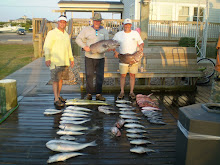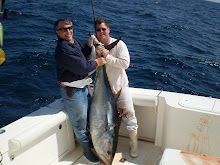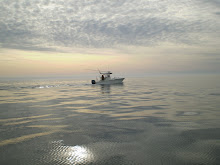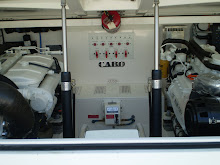
By Jim Field
The Crew has not done a very good job of identifying and recording the fish we catch. The "major" fish types we keep, clean, and eat, and we know these fish well. However, we catch a variety of other fish that we don't keep--that aren't known to taste good and/or are small--and we tend to throw them back without stopping to identify exactly what we've brought (temporarily) onboard. Worse still, we've been known to catch and consume many different types of bottom fish in large quantities where we've been too lazy to do the research to find out exactly what they are (subsequent posts will reveal this). Shame on us for being intellectually lazy. Our grade school science teachers would be unimpressed.
Today marks a new era on the Sea Ya Bea of meticulous recording keeping regarding our catch. Promise.
Looking at this blog, the bottom-most text in the right-hand column is a listing of all fish caught on the boat. It is grossly imprecise as it stands (trust me). I will clean it up over the summer--doing the necessary research on the web and in reference books to accurately record our fishing history.
Let's start today with the addition of a new fish on the list--the Banded Rudderfish. For now I will list it under a "jack" header--probably an incorrect family grouping. Over time we'll get more scientific with names, individual species, families, etc.
Here are the basic facts on the Banded Rudderfish: (I admit: the initial Latin words and scientific terms are Greek to me)
BANDED RUDDERFISH
Seriola zonata Family Carangidae
JACKS AND POMPANOS
Description: fish less than 11 inches long have dark band from eye to first dorsal fin and six prominent bars on body; larger fish are bluish, greenish, or brown; soft dorsal base about twice the length of the anal fin; tail-lobe white tipped.
Similar fish: other Seriola.
Where found: nearshore and offshore over hard bottom, generally in shallower water than other amberjacks; young associated with weed lines or floating debris and may follow sharks and other large fish.
Size: usually less than 10 pounds.
Remarks: adults feed on fish and shrimp; spawns
Dan with the catch. Caught while bottom fishing and vertical jigging at 280 Rocks in approximately 200 feet of water. Dan thinks fish doubles as short rifle.










No comments:
Post a Comment